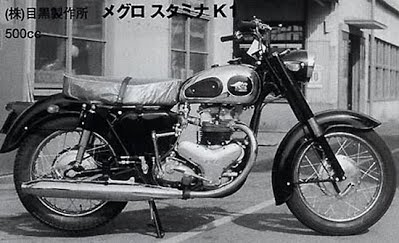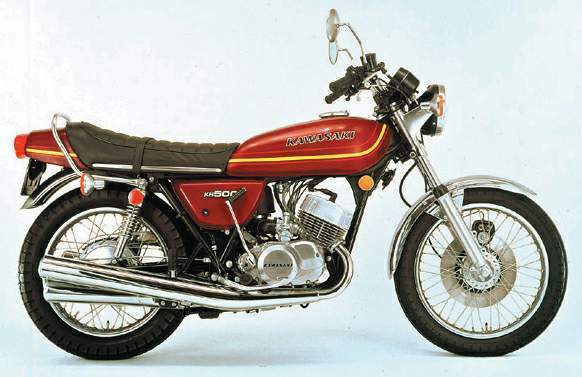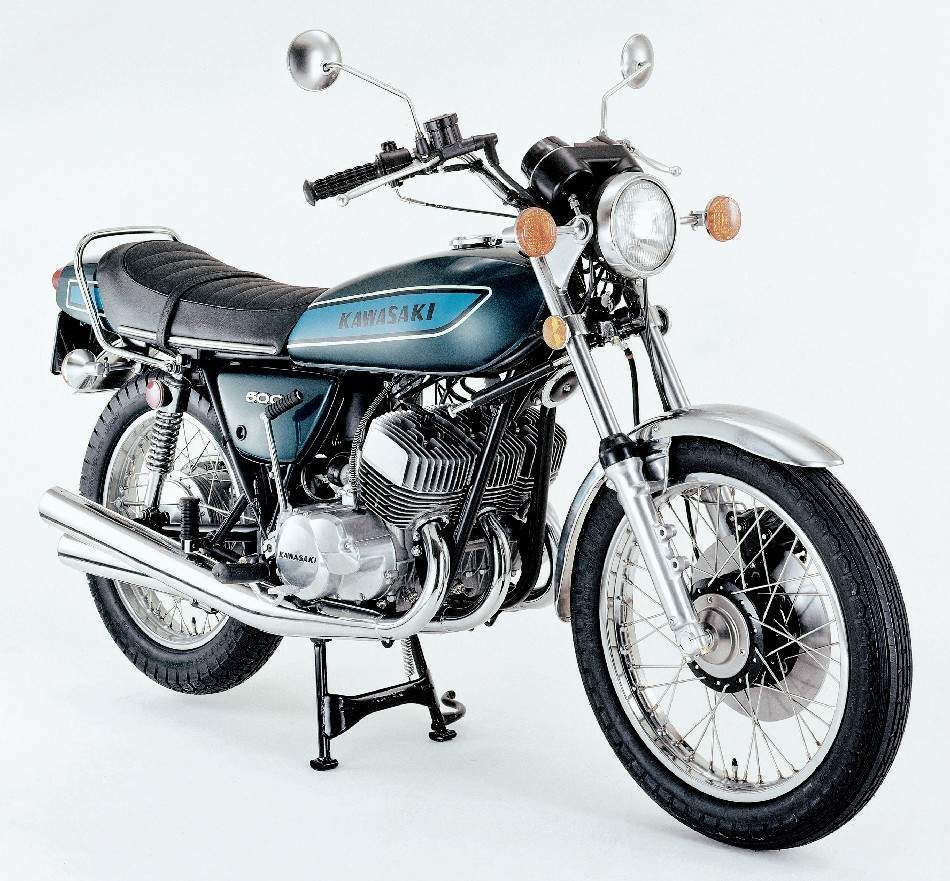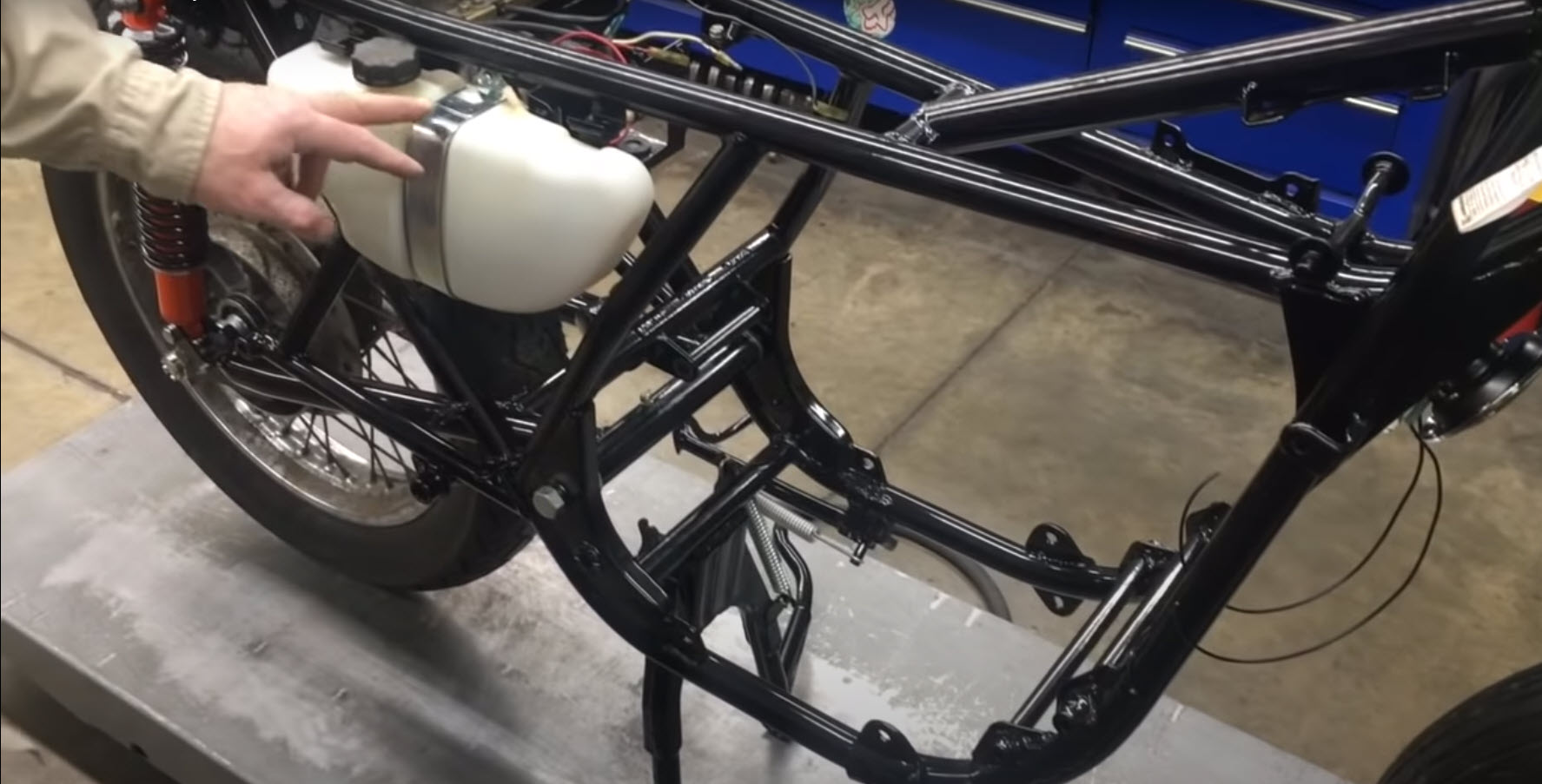At first, Kawasaki assembled motorcycles under the name of Meguro Manufacturing, having acquired the homonymous motorcycle producer with whom they had been in business when it was going through a hard economic period.
Meguro Manufacturing Co was founded in Meguro, Tokyo, Japan by Hobuji Murato and Takaji Suzuki as one of the first Japanese motorcycle companies, in 1937. Murato and Suzuki built a 500 cc single Z97 model grounded on a Swiss Motosacoche outline but their work was held back for this was around the start of WW2. The company supplied aircraft parts for the war and then re-started full production in 1948 when they came up with the Z97 joined by the 125 cc, 250 cc, and 350 cc overhead valve singles.
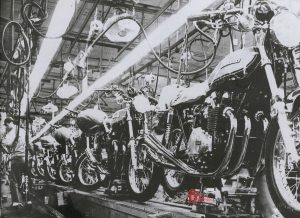
Throughout the 50s, Meguro went into racing and constructed its opening twin-cylinder design, the 651 cc T1 “Senior” with British design, pre-unit equivalent twin apparatus; and later the K-series “Stamina” prototype, a copy of one which Meguro had bought in 1953: the BSA A7. Its condition and manufacturing were higher than the BSA and it was described as “too good to be true” by one of the top motorcycle designers of the time, Edward Turner. It was the first time Japanese motorcycle designing had captured attention worldwide and the next models designed in collaboration with Kawasaki were entirely of Japanese design. Its other models fabricated in conjunction with Kawasaki were wholly of Japanese design.
The company continued to grow and by 1960 it was Japan’s largest running motorcycle business. It first changed its name to Kawasaki-Meguro in 1962 for commemorating their alliance and together they produced the B8 125 cc, a commercial success.
Two years later, by the end of 1964, the company was a witness of the advertisement and selling usefulness of having a division specifically dedicated to manufacturing motorcycles together with its heavy industry services and mainly its already recognized sales openings. Kawasaki ultimately took full control of the corporation.
They produced “Kawasaki-Meguro Works” 125 cc, 175 cc, and 250 cc single-cylinder vehicles and later enlarged and further developed one of their pre-existing models, turning it from the 500 cc K-series twin-cylinder sample to the 625 cc Kawasaki W series. The vehicle was adopted by the local government as an official means of transportation.
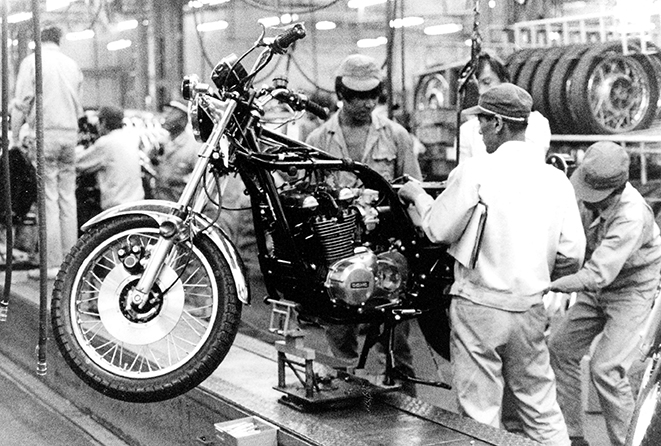
During this decade, the Kawasaki engineers were creating a four-stroke apparatus for small cars, and in 1963 Kawasaki and Meguro fused to found Kawasaki Motorcycle Co., Ltd. acquiring as well a new emblem visible in their motorcycles produced from 1962 to 1967, resembling a flag within a wing.
The work on the K and W series persisted, the main projects were the Meguro K1 (a copy of the BSA A7 500 cc vertical twin) and the Kawasaki W1. The K2 was shipped to the U.S. for an examination in response to the growing American market for four-stroke motorcycles. At first, it was excluded for a lack of power, yet by the mid-’60s, Kawasaki was trading a reasonable number of motorcycles. It was the Kawasaki H1 Mach III in 1968 along with several enduro-style motorcycles the ones that augmented the sales of Kawasaki units.
A list of Kawasaki-Meguro models:
- Meguro Kawasaki SG
- Parallel 2-cylinder 650 cc
- Meguro T1 Senior 1955-1960: Said to be the greatest inspiration for the Kawasaki W-series.
- Meguro T2 Senior 1957-1960: Variant of T1
- Meguro-Kawasaki 650 X 1966: A prototype, made solely for the 12th 1966 Tokyo Motor Show
- Single-cylinder 500 cc
- Meguro Z97 1937–1938
- Meguro Z98 1938–1941: Enhanced Z97.
- Meguro Z1 1947–1951: Parallel to the pre-war Z98.
- Meguro Z2 1951–1952: Meguro Z1 with hydraulic front fork.
- Meguro Z3 1952–1953: Meguro Z2 with upgrading to rear suspension.
- Meguro Z5 1953–1955
- Meguro Z6 1955–1956
- Meguro Z7 “Stamina” 1956–1960: The last Meguro single cylinder.
- Parallel 2-cylinder 500 cc
- Meguro K “Stamina” 1960–1965
- Kawasaki 500/Meguro K2 1965–1966: Kawasaki Heavy Industries variation of Meguro K-series.
- Single-cylinder 350 cc
- Meguro Y “Rex” 1953–1956: Reduced and agiler sample based on the 1956 Meguro Z 346 cc.
- Meguro Y2 “Rex” 1957–1959
- Single-cylinder 325 cc
- Meguro FY 1959–1962
- Meguro YA “Argus” 1959–1962
- Single-cylinder 300 cc
- Meguro J3/J3A “Junior” 1952–1956.
- Meguro J-8 “Argus” 1963
- Single-cylinder 250 cc
- Meguro J “Junior” 1950–1951: Japan’s first 250 cc bike
- Meguro J2 “Junior” 1951–1952: A modification of Meguro J.
- Meguro S “Junior” 1953–1954
- Meguro S2 “Junior” 1954–1956: A variation of Meguro S with the first four-speed gearbox.
- Meguro S3 “Junior” 1956–1959
- Meguro F 1958–1960
- Meguro S5 “Junior” 1959
- Meguro S7 “Junior” 1960–1963
- Meguro S-8 “Junior” 1962–1964: Last of the Meguro S series with rear suspension.
- Meguro AT “Auto Track” 1962–1964: Inspired on Meguro S3.
- Kawasaki-Meguro 250 SG 1964–1969: The last model sold with the brand name of Meguro. Encouraged the Kawasaki Estrella model.
- Kawasaki Estrella
- Kawasaki W650

